A simple guide to identifying British moths
They might not be considered as beguiling and romantic as butterflies, but we should look at moths in a new light, suggests David Tomlinson.
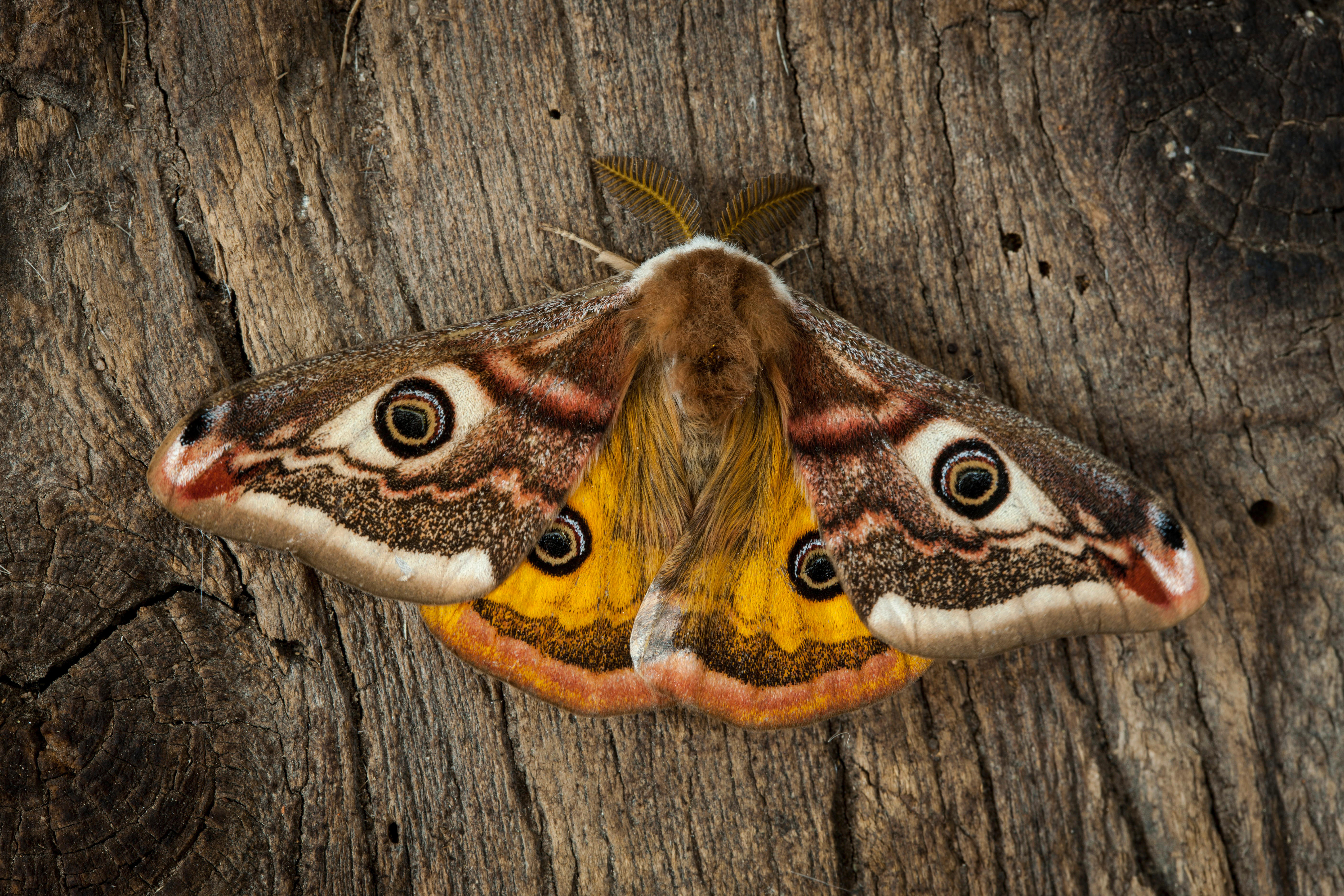

'A moth is a butterfly suffering from poor public relations,’ an enthusiast once remarked and, although he was joking, he’s right — we celebrate our butterflies, but neglect our moths.
Physiologically, there’s very little difference between the two, apart from the butterfly’s distinctive clubbed antennae. Both have the same lifecycle of egg, caterpillar, chrysalis and adult.
[Read more: The Secret Life of Moths]
The Country Life guide to identifying British moths
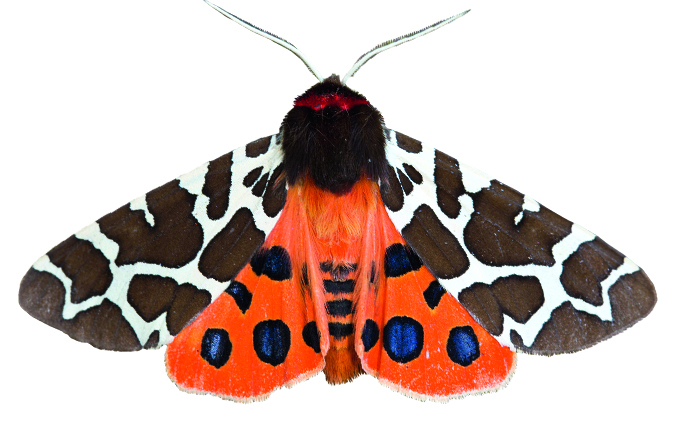
Garden tiger (Arctia caja)
If the distinctive garden tiger is a species you recall from your childhood, but one you haven’t seen for some time, you’re not alone. The charity Butterfly Conservation reports that the species has declined by 92% in the past 40 years, possibly due to the detrimental effect that milder, wetter winters have had on caterpillar survival

Death’s-head hawk-moth (Acherontia atropos)
The ultimate moth-trapper’s prize, the giant death’s-head hawk-moth (with a wingspan of nearly 5in) is a tropical African species that is a rare vagrant to northern Europe. The distinctive skull on the thorax, together with its ability to emit high-pitched squeaks, explains why its appearance was once thought to be a bad omen
Sign up for the Country Life Newsletter
Exquisite houses, the beauty of Nature, and how to get the most from your life, straight to your inbox.
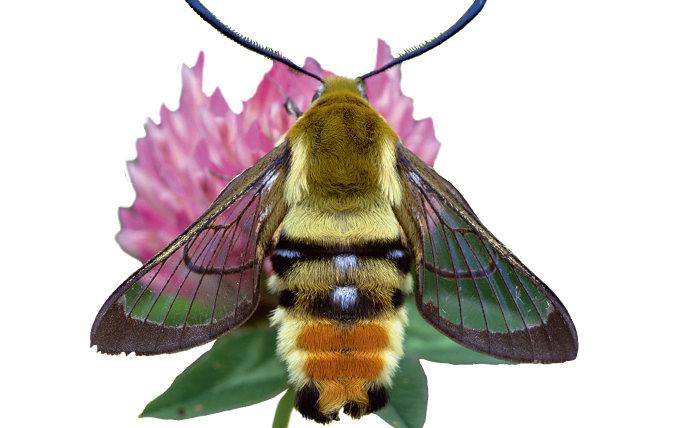
Narrow-bordered bee hawk-moth (Hemaris tityus)
It’s easy to confuse this day-flying moth with a bumblebee, which it mimics closely, yet its conspicuously faster and more agile flight allows it to skim from bloom to bloom in the flower-rich meadows it favours. Once widespread, it has declined due to the loss of unimproved pastures and chalk downland
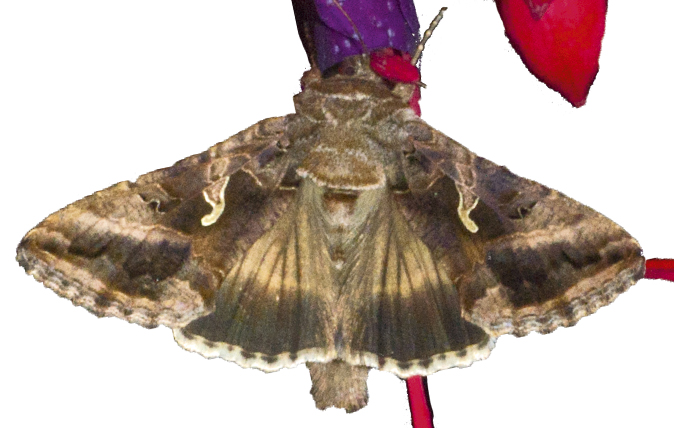
Silver Y (Autographa gamma)
Our most common migrant moth, which is easily identified by the distinctive metallic Y on each forewing, in some years arrives in southern England in enormous numbers, often accompanying similar invasions of painted lady butterflies. Although they’re chiefly crepuscular, newly arrived Silver Y moths will feed readily during the day
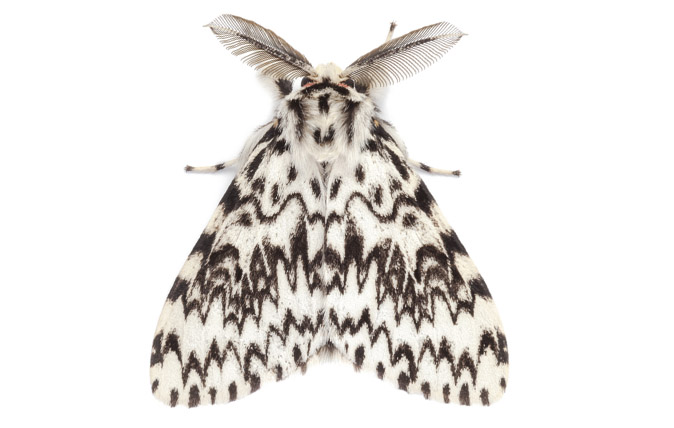
Black arches (Lymantria monacha)
This attractive black-and-white moth is widely distributed in the oak woods of southern England, where it’s not generally considered to be a problem. On the Continent, however—where its caterpillars consume pine needles and major infestations kill pine trees—it’s regarded as a serious, if sporadic, pest
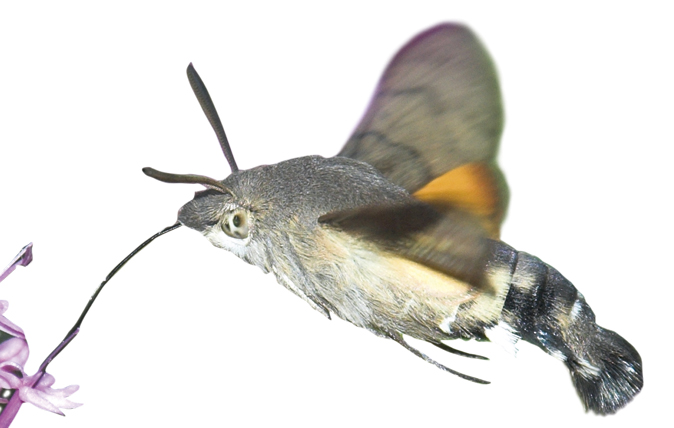
Hummingbird hawk-moth (Macroglossum stellatarum)
No moth is more aptly named than this. A migrant to the British Isles, it arrives in variable numbers each summer, feed- ing by day on nectar-yielding flowers, favouring jasmine, buddleia, phlox and nicotiana, by hovering in front of the bloom and sipping the nectar, before darting to the next flower
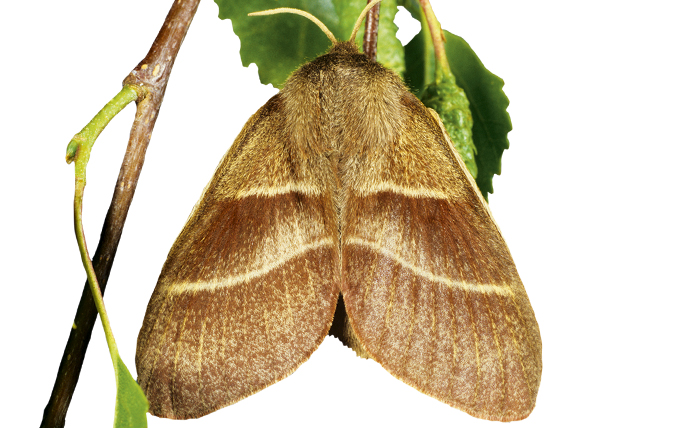
Fox (Macrothylacia rubi)
The nocturnal, grey-brown female (left) is seldom seen, in contrast to the foxy-red-brown male, which undertakes late-afternoon flights over heathland in search of a mate. Their flight is powerful, erratic and, typically, just above the ground
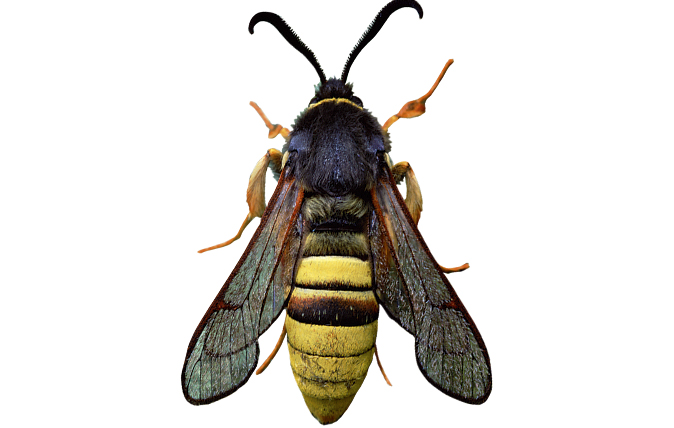
Lunar hornet (Sesia bembeciformis)
There are many moths that mimic other species, but few do a better job than the lunar hornet moth, which really does resemble a large hornet, com- plete with a menacing hornet-like buzz. Do note, however, the lack of the wasp’s distinctive waist between the abdomen and thorax
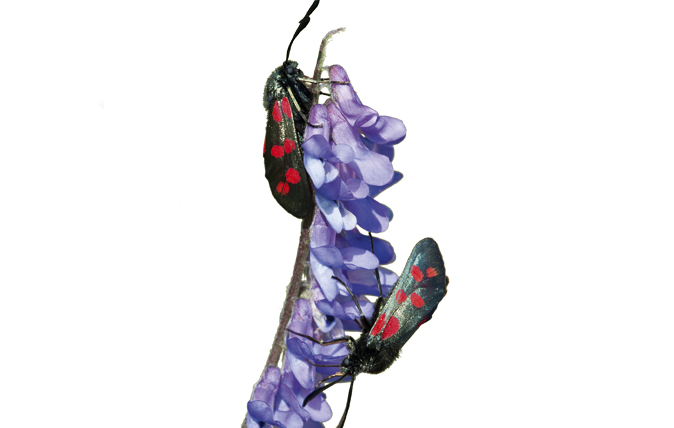
Six-spot burnet (Zygaena filipendulae)
This familiar species occurs commonly throughout the British Isles, although, in the North, it’s restricted to the coast. A day- flier that’s most often seen when the sun’s out, it’s one of six closely related UK species, but is easily distinguished as it’s the only one with six red (occasionally yellow) spots
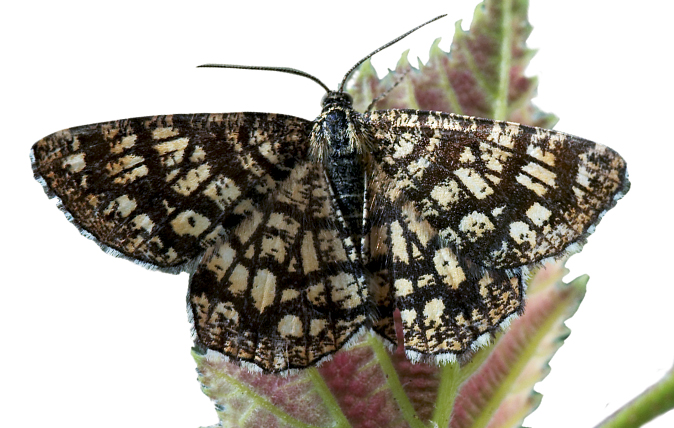
Latticed heath (Chiasmia clathrata)
Unusually, this moth is equally happy flying by day, even in bright sunshine, or at night. A common and wide-ranging species, its colouring is variable, with the background ranging from white to yellowish. Its habit of folding its wings vertically over its back often leads to its misidentification as a butterfly

Emperor (Saturnia pavonia)
Arguably our most beautiful moth, the butterfly-like emperor is widespread throughout the British Isles. Although the fast-flying males are often seen by day—their remarkable sense of smell and complex antennae allow them to locate a mate from a mile away—females only fly at night
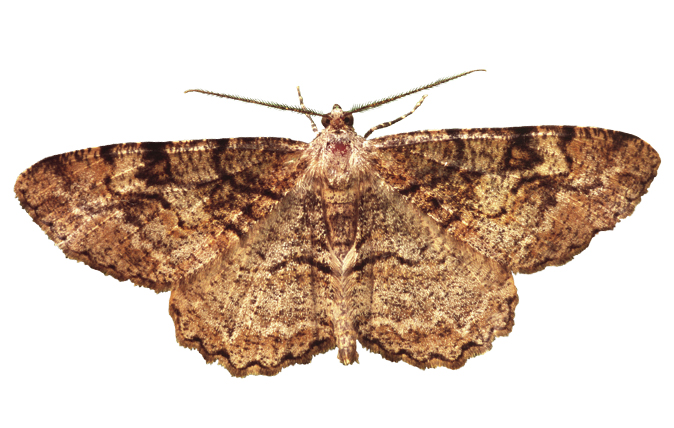
Mottled beauty (Alcis repandata)
Few insects take camouflage to such an extreme as the mottled beauty, whose colouring varies from region to region to suit its background. A common and widespread species, it flies in June and July, in woodland and even suburban gardens where, notsurprisingly, it’s often overlooked
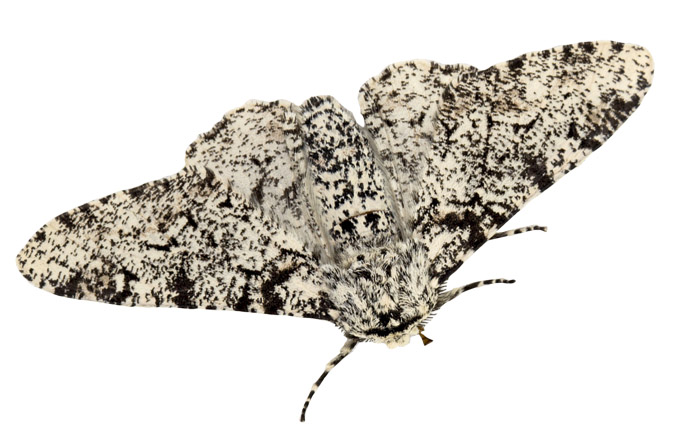
Peppered (Biston betularia) Famous for demonstrating evolution in action, the melanic form of this species was first found in Manchester in 1848. Within about 50 years, it made up 98% of the local population, so well was it camouflaged against soot-blackened trees. The normal salt-and-pepper colouring provides excellent protection in more normal conditions
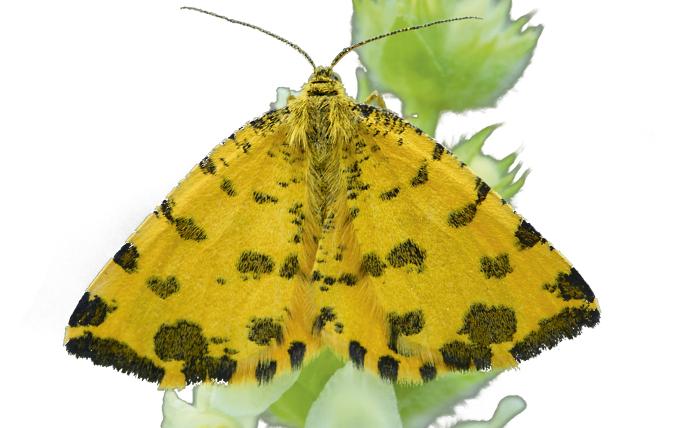
Speckled yellow (Pseudopanthera macularia)
This sun-loving species is often encountered in woodland in May and June and is frequently mistaken for a butterfly. The colouration and the extend of the brown blotches vary, but there are no similar moths to confuse it with. Common in southern England, it occurs as far north as central and western Scotland
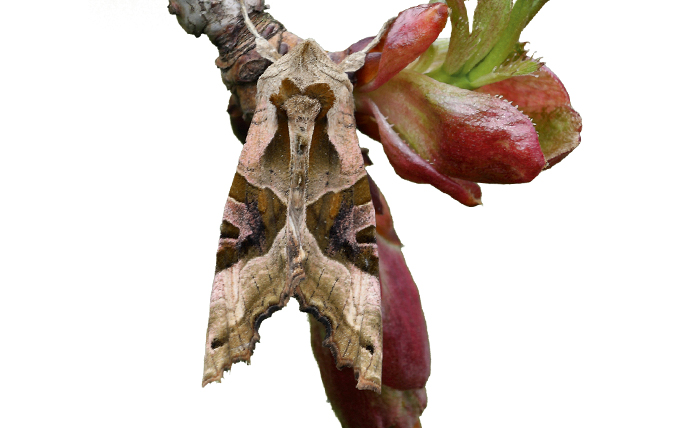
Angle shades (Phlogophora meticulosa)
The delicately scalloped wings of the angle shades make it one of our easiest moths to identify. Widely distributed throughout the British Isles, it’s most common in the South, where it may be seen in every month. As its caterpillars feed on a wide variety of plants, this moth occurs frequently in gardens
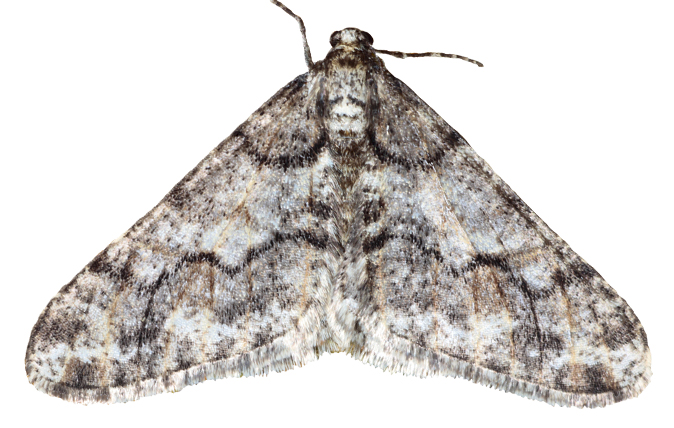
Spring usher (Agriopis leucophaearia)
One of the first moths of the year, appearing as early as January, the males fly to the females, which are wingless. The leaf-green colouring of the caterpillar matches the young oak leaves on which it feeds, but great numbers are taken by tits and other birds
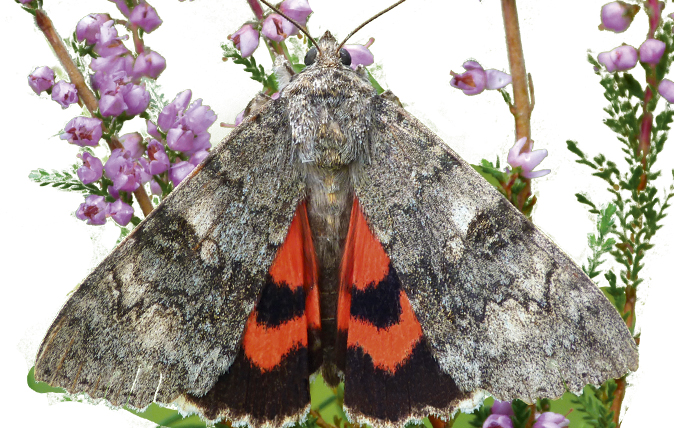
Red underwing (Catocala nupta)
At rest with its hindwings hidden, this large moth is perfectly camouflaged. However, when disturbed, it flashes its vivid hindwings in a bid to startle any predators. Quite common in the southern half of Britain and extending its range north, it should be looked for in gardens in August and September
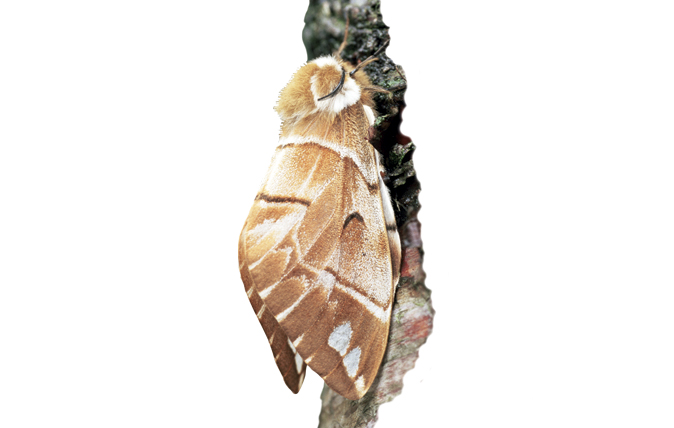
Kentish glory (Endromis versicolora)
The name is somewhat confusing, especially as this beautifully marked species was lost from Kent in 1868 and is now restricted to the Scottish Highlands. However, now that its specialist requirements are understood (it requires regenerating birch saplings), there is a strong case for reintroducing it to sites where it once occurred
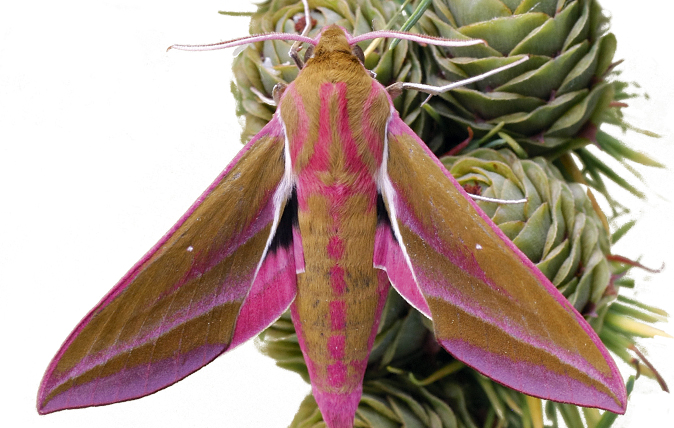
Elephant hawk-moth (Deilephila elpenor)
This exquisitely beautiful species, with its crimson blush, is a common and widespread resident throughout the British Isles—in gardens, its caterpillars are often found on fuchsias. Adults rarely fly until well after dark, but are strongly attracted to light. The name derives from the caterpillar’s distinctive trunk-like snout
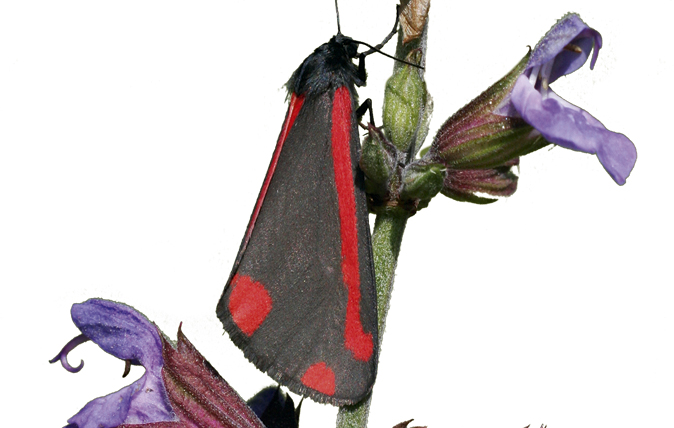
Cinnabar (Tyria jacobaeae)
Readily disturbed during the day, the flashing crimson underwings of the cinnabar are a warning to predators that it’s toxic. A ragwort specialist, its caterpillars play a major role in helping control this noxious yellow weed. Like the adult, the yellow-and-black striped caterpillars are also poisonous
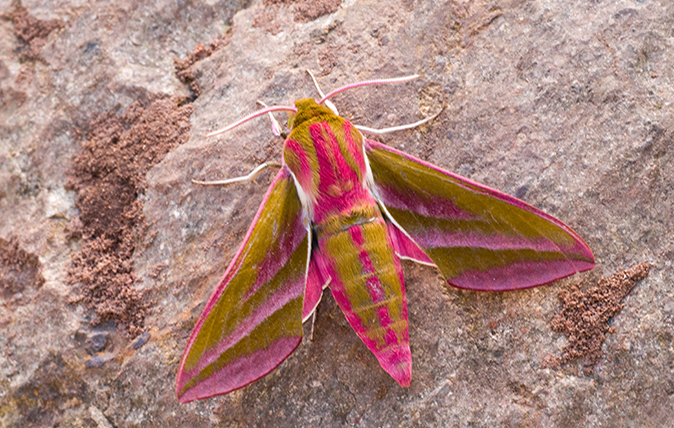
The secret life of moths
David Tomlinson asks why we celebrate our butterflies, but neglect our moths?
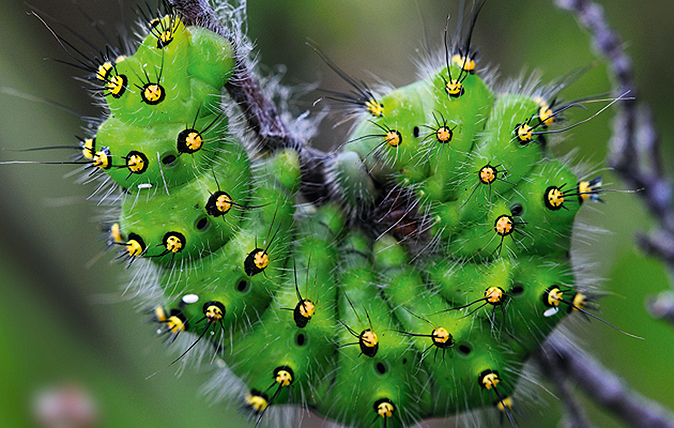
Common caterpillars: A simple guide
Are you able to tell your woolly bears from your elephant trunks?
Country Life is unlike any other magazine: the only glossy weekly on the newsstand and the only magazine that has been guest-edited by HRH The King not once, but twice. It is a celebration of modern rural life and all its diverse joys and pleasures — that was first published in Queen Victoria's Diamond Jubilee year. Our eclectic mixture of witty and informative content — from the most up-to-date property news and commentary and a coveted glimpse inside some of the UK's best houses and gardens, to gardening, the arts and interior design, written by experts in their field — still cannot be found in print or online, anywhere else.
-
 Five beautiful homes, from a barn conversion to an island treasure, as seen in Country Life
Five beautiful homes, from a barn conversion to an island treasure, as seen in Country LifeOur pick of the best homes to come to the market via Country Life in recent days include a wonderful thatched home in Devon and a charming red-brick house with gardens that run down to the water's edge.
By Toby Keel Published
-
 Shark tanks, crocodile lagoons, laser defences, and a subterranean shooting gallery — nothing is impossible when making the ultimate garage
Shark tanks, crocodile lagoons, laser defences, and a subterranean shooting gallery — nothing is impossible when making the ultimate garageTo collectors, cars are more than just transport — they are works of art. And the buildings used to store them are starting to resemble galleries.
By Adam Hay-Nicholls Published